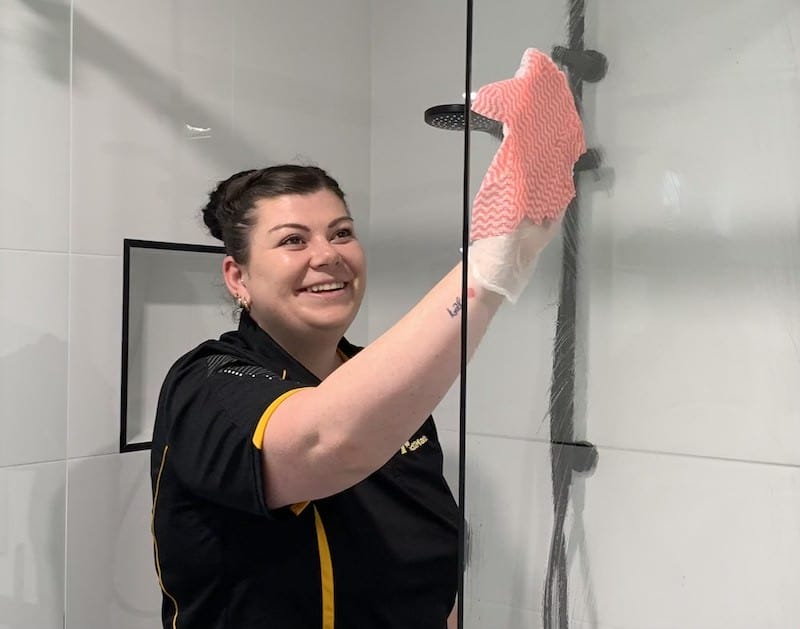The Best House Cleaning Sunshine Coast

Professional, vetted cleaners

Friendly customer support

Recurring discounts


WHY MAID2MATCH?
More Than Just A Cleaning Service

Easily book & pay online
Book online for your Sunshine Coast house cleaning services using your phone or computer.

The same cleaner every time
When you book a regular service with us, you'll have the same house cleaner each time.

Cleaning products provided
For your convenience, our professional cleaners bring their own cleaning equipment for each service.

Easily book and pay online

The same cleaner for regular services


Cleaning products and equipment provided

Adaptable to your needs & preferences

Convenient online booking management

No lock-in contracts for ongoing services

Adaptable to your needs & preferences
We work to be flexible and adapt our domestic cleaning services to your cleaning needs.

Convenient booking management
Whatever you need regarding your house cleaning service, we’re just a message away!

No lock in contracts for ongoing services
You control your regular cleaning services, with no locked-in long-term contract.

1800 207 686
MAKING YOUR HOME SPARKLE
Flat Rate House Cleaning Service

Book a flat rate service when you need a full house clean. Our cleaners will follow our detailed service checklist throughout your home. Extras are available at additional flat rates and a deep clean can be added for homes that haven't been professionally cleaned recently. Hourly cleans available upon request.
MAKING YOUR HOME SPARKLE
House Cleaning Services On The Sunshine Coast


Flat Rate Cleaning
Choose this for: you need a full house clean. This fixed price service means our Sunshine Coast cleaners will follow our detailed service checklist throughout your home. Extras are available at additional flat rates. A deep clean can be added for homes that haven't been professionally cleaned recently.

What's Included in the Flat Rate?
 Vacuuming & Mopping
Vacuuming & Mopping Sweeping & Dusting
Sweeping & Dusting Cleaning The Bedrooms
Cleaning The Bedrooms Cleaning The Bathrooms
Cleaning The Bathrooms Cleaning The Toilets
Cleaning The Toilets Cleaning The Kitchen
Cleaning The Kitchen Cleaning The Sinks
Cleaning The Sinks Cleaning The Stovetop
Cleaning The Stovetop Cleaning The Living Spaces
Cleaning The Living Spaces


Hourly Rate Cleaning
Choose this for: you need a quick cleaning job, or a tidy-up in specific areas of your home. This time-based service means our Sunshine Coast cleaners will accommodate your cleaning priorities or focus on what needs cleaning the most. They’ll only work to the allotted time you've booked in for.

ABOUT MAID2MATCH
Making A Difference In The Cleaning Industry
Our professional cleaners on the Sunshine Coast are permanent employees – they show up to your home in a Maid2Match uniform with high quality cleaning supplies and equipment. We pay all of our employees fairly, in line with the Cleaning Services Award Rate which is updated every year.
All of our cleaners go through an initial phone screening, face-to-face second interview, and police check. We only hire employees with a clear background check and NDIS check. Your home will be in good hands – Maid2Match is the professional house cleaning company you can trust.
100% Satisfaction Guarantee
After each house cleaning service, you'll receive an email asking you to rate your service out of 5 stars and leave an optional comment.
Checking in with our customers after each service allows us to ensure we are consistently meeting your cleaning needs as they may change over time.
All customer feedback, both positive and constructive, is managed by our full-time Customer Support Team and appropriately passed on to our cleaners.
We are always looking for areas to improve and make our service better.
If for any reason you are unhappy with your service, our Support Team will be in touch to get more details.
We can then offer to send your cleaner back, or provide either a partial or full refund depending on the situation.

OUR SUNSHINE COAST CLEANING TEAM
Meet Some Of Our Maid2Match Cleaners

Sharon
Maid2Match Cleaner
Brigitte
Maid2Match Cleaner

Maria
Maid2Match Cleaner
Sharon
Maid2Match Cleaner
Brigitte
Maid2Match Cleaner
Maria
Maid2Match Cleaner
Your home is safely insured with us

450+ FIVE STAR REVIEWS ON GOOGLE
FREQUENTLY ASKED QUESTIONS
Sunshine Coast Cleaning Information
What time are your services available?
What services are included?
How much does it cost to clean my house?
Are cleaning supplies provided?
Are your cleaning supplies safe for children and pets?

How does a recurring service work?
How easily can I book online?
What forms of payment do you accept?
Do I have to be home for the cleaning service?
How long does it take to clean my house?
MAKING YOUR HOME SPARKLE
Sunshine Coast Cleaning Recommendations
What Are the House Cleaning Prices For The Sunshine Coast?
The house cleaning prices for the Sunshine Coast range from $31 to $65/hr. You can also typically expect flat rate domestic pricing from $70 to $220 for weekly and monthly cleans. Prices for a bond clean can vary from $150 to $800 depending on the size of the home.
Here are some of the current statistics on Sunshine Coast cleaning services:
|
Average Cleaning Service Price |
$146.75 |
|
Average Positive Customer Review |
96% |
|
Average Home Size |
3.54 beds and 1.25 baths |
Cleaning Facts
|
Weekly Clean |
21% |
|
Fortnightly Clean |
54% |
|
Every 3 Weeks |
10% |
|
Monthly Cleaning |
15% |
|
Deep Cleaning |
4% |
|
Clean Interior Windows |
5% |
|
Oven Cleaning |
1% |
|
Housekeeping Extras |
8% |
Jobs On The Sunshine Coast In The Last Month
Jobs In The Last Month
Hours Saved
Professional Cleaners


Book A House Cleaning On The Sunshine Coast Today
The Sunshine Coast lives up to its name — sand, surf, and plenty of sunshine. Along with that comes plenty of things to do, and not just at the beach! Go explore the Hinterland or check out one of the amazing breweries. Locals know the list of things to do in the Sunshine Coast region is endless… and unfortunately, so is the list of chores back at home. (Boo.)
If you want to go hiking, pick your own strawberries, or even just wander the beach, then give yourself the perfect reason. Book a house cleaning service with Maid2Match so you can take an afternoon off, or even make it a regular thing! Then go soak up the sunshine as you relax on the beach — you'll return to the best house cleaning ever.

WE DON'T JUST CLEAN HOMES
Other Sunshine Coast Cleaning Services We Offer

At the end of your lease? Let Maid2Match clean your home inside and out, with our detailed checklist that covers everything your agent will look for.

Maid2Match is proud to serve customers of all abilities. We accommodate your needs and preferences, and work according to your NDIS Plan to keep your home clean.

From your reception area to your break rooms, we’ll have your workplace sparkling. Book a cleaning service with us and get a spotless office, guaranteed.

From your reception area to your break rooms, we’ll have your workplace sparkling. Book a cleaning service with us and get a spotless office, guaranteed.

At the end of your lease? Let Maid2Match clean your home inside and out, with our detailed checklist that covers everything your agent will look for.

Maid2Match is proud to serve customers of all abilities. We accommodate your needs and preferences, and work according to your NDIS Plan to keep your home clean.

CLEANING ON THE SUNSHINE COAST
Popular Suburbs
CLEANING ON THE SUNSHINE COAST
 Vacuuming & Mopping
Vacuuming & Mopping Sweeping & Dusting
Sweeping & Dusting Cleaning The Bedrooms
Cleaning The Bedrooms Cleaning The Bathrooms
Cleaning The Bathrooms Cleaning The Toilets
Cleaning The Toilets Cleaning The Kitchen
Cleaning The Kitchen Cleaning The Sinks
Cleaning The Sinks Cleaning The Stovetop
Cleaning The Stovetop Cleaning The Living Spaces
Cleaning The Living Spaces


